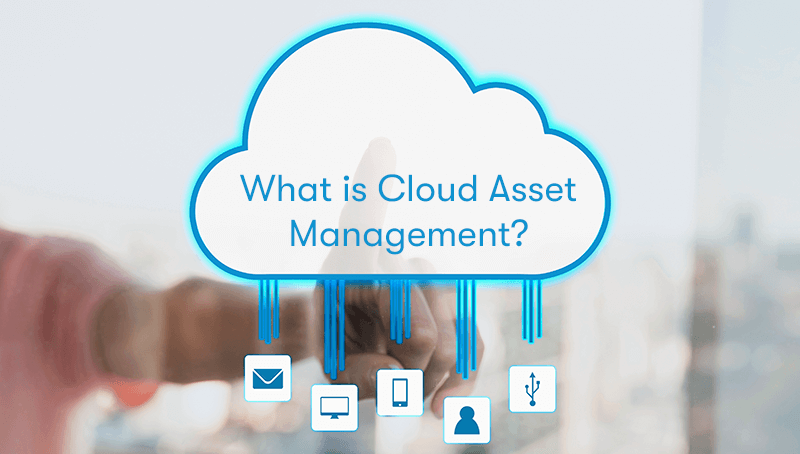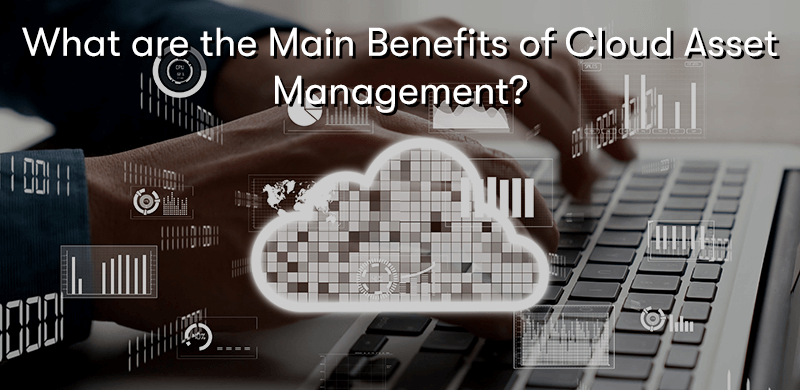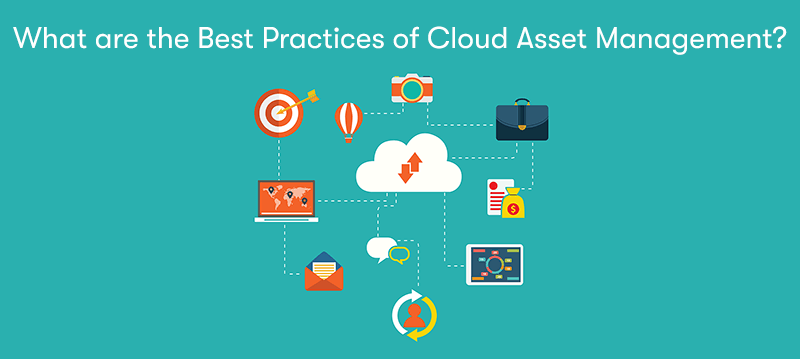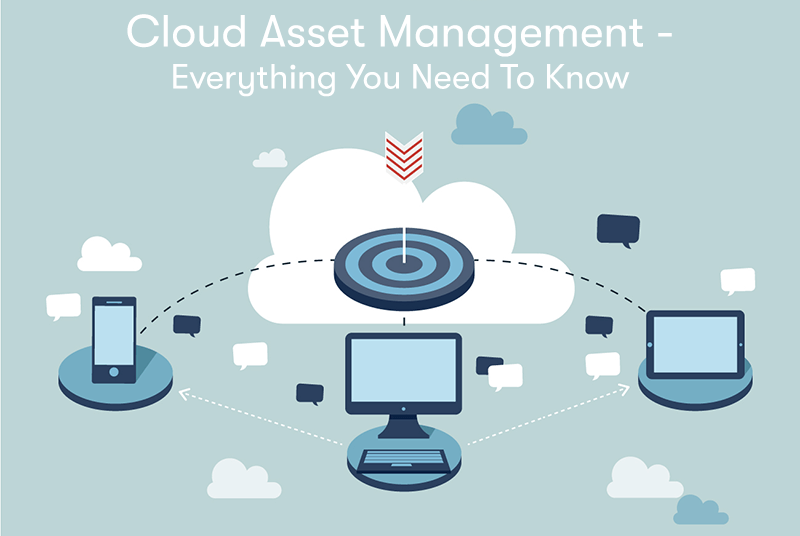(CAM) Cloud Asset Management - Everything You Need To Know
Welcome to our comprehensive exploration of Cloud Asset Management (CAM), a pivotal component in the modern digital landscape. As organisations increasingly migrate to cloud-based solutions, understanding and efficiently managing cloud assets has become more crucial than ever.
This blog post aims to delve into the intricacies of CAM, shedding light on its significance in optimising resource utilisation, enhancing security, and ensuring cost-effectiveness in cloud environments.
From defining cloud assets to differentiating CAM from traditional asset management approaches, our discussion will provide valuable insights for businesses seeking to navigate the complexities of the Cloud.
Join us on this exploration to unravel the essentials of Cloud Asset Management and its transformative impact on today's technology-driven business operations.
What is Cloud Asset Management (CAM)?

Cloud Asset Management refers to the practice of managing and optimising the use of cloud resources and digital assets across various cloud environments. This concept is essential in businesses and organisations that rely on cloud computing. Key aspects of Cloud Asset Management include:
Resource Optimisation
Ensuring that cloud resources like storage, computing power, and network capabilities are used efficiently to avoid wastage and reduce costs.
Asset Visibility and Control
Keeping track of all cloud-based assets (like applications, services, and data) and controlling their deployment, usage, and management.
Cost Management
Monitoring and managing the costs associated with cloud services. This involves understanding the pricing models of cloud providers and using tools to track usage and expenses.
Security and Compliance
Ensuring that cloud assets are secure and compliant with relevant laws and regulations. This includes managing access controls, protecting data, and conducting regular security assessments.
Integration and Automation
Automating cloud asset management tasks where possible and ensuring smooth integration with other systems and workflows within the organisation.
Lifecycle Management
Managing the entire lifecycle of cloud assets from procurement and deployment to maintenance and eventual decommissioning or replacement.
Performance Monitoring
Continuously monitor the performance of cloud services and assets to ensure they meet the required standards and efficiently support business processes.
By effectively managing cloud assets, organisations can enhance efficiency, reduce costs, and improve their cloud-based operations' overall performance and security.
What Are Cloud Assets?
Cloud assets are components and resources that are utilised in cloud computing environments. These assets are hosted on remote servers and accessed over the internet, enabling users to store, manage, and process data without needing local hardware and software. Key types of cloud assets include:
Computing Resources
This includes virtual machines (VMs), containers, and serverless computing resources that provide processing power for running applications and services in the Cloud.
Storage Resources
Cloud storage solutions like databases, data warehouses, object storage, and file storage systems are used for storing and managing digital data.
Networking Resources
This encompasses virtual networks, load balancers, and VPNs that enable connectivity and data transfer within and across cloud environments.
Applications and Services
Software applications and services are hosted in the Cloud, ranging from email and collaboration tools to complex enterprise applications.
APIs and SDKs
Application Programming Interfaces (APIs) and Software Development Kits (SDKs) allow developers to interact with and build upon cloud services.
Data
Any data stored in the Cloud, including databases, files, backups, logs, and analytics data.
Security Assets
Security tools and services like firewalls, identity and access management systems, and encryption tools help protect cloud assets.
Configuration and Management Tools
Tools for configuring, managing, and monitoring cloud resources, including orchestration and automation tools.
Licenses and Subscriptions
Software licenses and subscriptions for services and tools used within the Cloud.
Documentation and Metadata
Documentation related to cloud assets and metadata that describes and gives context to these assets.
Cloud assets are integral to modern IT infrastructure, offering scalability, flexibility, and cost-efficiency. However, they also require effective management to ensure they are used optimally, remain secure, and align with business objectives.
Why is it Important to Manage Assets in the Cloud
Managing assets in the Cloud is crucial for several reasons, especially as more businesses shift to cloud-based solutions for their IT needs. Here are the key reasons why effective cloud asset management is essential:
Cost Efficiency
Proper management of cloud assets helps optimise resource usage, significantly reducing operational costs. Organisations can incur unnecessary expenses without adequate management due to over-provisioning or underutilising cloud resources.
Security and Compliance
The cloud environment presents unique security challenges. Managing cloud assets effectively ensures that security protocols are adhered to, data is protected, and the organisation complies with relevant data protection and privacy regulations.
Resource Optimisation
Cloud asset management allows organisations to monitor and adjust resource allocation in real time, ensuring that computing power, storage, and other resources are used efficiently and scaled according to demand.
Performance Monitoring and Improvement
Regularly monitoring the performance of cloud assets helps identify and resolve issues quickly, ensuring optimal performance of cloud services and applications.
Business Continuity and Disaster Recovery
Effective asset management includes backing up data and implementing disaster recovery plans. This ensures business continuity and quick recovery in case of data loss or other disruptions.
Visibility and Control
With a comprehensive view of all cloud assets, organisations can make informed decisions, maintain control over their IT environment, and ensure that cloud services align with business goals and strategies.
Enhanced Flexibility and Scalability
Proper management of cloud assets allows businesses to remain agile, efficiently scaling resources up or down as required, and quickly adapting to changing market demands and business needs.
Better Governance and Risk Management
Managing cloud assets well helps enforce governance policies, manage risks more effectively, and ensure accountability in the use of cloud resources.
In essence, managing assets in the Cloud is vital for maximising the benefits of cloud computing while minimising risks and costs, thereby supporting an organisation's overall efficiency and strategic objectives.
What are the Main Benefits of Cloud Asset Management?

Cloud Asset Management offers several significant benefits to organisations, enhancing their efficiency, security, and overall operational effectiveness. The main benefits include:
Cost Optimisation
By closely monitoring and managing cloud resources, organisations can prevent over-provisioning and underutilisation, leading to significant cost savings. Cloud asset management helps identify unused or underused resources, allowing for more efficient budget allocation and expenditure.
Improved Security and Compliance
Effective asset management in the Cloud ensures that security measures are properly implemented and maintained, reducing the risk of data breaches and cyber-attacks. It also assists in meeting compliance requirements by ensuring that data handling and storage follow relevant regulations and standards.
Enhanced Visibility and Control
Cloud asset management provides a comprehensive view of all cloud-based resources, enabling better control and oversight. This visibility is crucial for making informed resource allocation, usage, and management decisions.
Resource Efficiency
Managing cloud assets allows organisations to optimise their use of resources, ensuring that they have the necessary computing power, storage, and network capabilities when needed without incurring unnecessary costs for excess capacity.
Streamlined Operations
Cloud asset management can automate many resource provisioning and management aspects, reducing manual workloads and streamlining operations. This leads to more efficient processes and frees IT staff to focus on more strategic tasks.
Scalability and Flexibility
The Cloud inherently offers scalability, flexibility, and effective asset management maximises these advantages. Organisations can quickly scale resources up or down based on demand, allowing them to respond agilely to market changes or business needs.
Business Continuity and Disaster Recovery
Proper management of cloud assets includes robust backup and disaster recovery solutions, ensuring that critical data and applications can be quickly restored during a disruption, thereby supporting business continuity.
Improved Performance Monitoring
Regular monitoring and management of cloud assets lead to better performance of cloud services. This ensures that applications and services run efficiently, providing a better experience for users and supporting business processes effectively.
Strategic Alignment
With comprehensive cloud asset management, organisations can ensure that their cloud resources and services align well with their overall business strategy and objectives, supporting long-term growth and success.
In summary, cloud asset management is a crucial practice for organisations leveraging cloud computing, as it enhances operational efficiency, cost-effectiveness, security, and strategic alignment in the increasingly cloud-centric business landscape.
What are the Best Practices of Cloud Asset Management?

Implementing best practices in Cloud Asset Management is crucial for organisations to maximise the benefits of their cloud investments. Here are some of the key best practices:
Centralised Visibility and Inventory
Maintain a centralised inventory of all cloud assets, including computing resources, storage, network components, and applications. This visibility is crucial for effective management and optimisation.
Regular Auditing and Monitoring
Conduct regular audits and continuous monitoring of cloud assets. This helps identify unused or underutilised resources, ensure security compliance, and detect any anomalies or inefficiencies.
Cost Management and Optimisation
Implement tools and practices for monitoring and managing cloud costs. This includes setting budgets, tracking spending, and using cost optimisation tools to identify areas where expenses can be reduced.
Security and Compliance
Enforce robust security measures, including data encryption, access controls, and regular security assessments. Ensure compliance with relevant laws and industry standards to protect data and avoid legal and regulatory issues.
Lifecycle Management
Manage the lifecycle of cloud assets from procurement to decommissioning. This includes keeping track of the end of life for resources and planning for upgrades or replacements as needed.
Resource Optimisation and Scaling
Utilise cloud management tools for auto-scaling and resource optimisation. These tools automatically adjust resources based on demand, ensuring efficient use without manual intervention.
Use of Automation and Orchestration Tools
Automate repetitive tasks like provisioning, deployment, and management of cloud resources. Orchestration tools can help manage complex workflows and processes across multiple cloud environments.
Performance Monitoring and Management
Continuously monitor the performance of cloud assets to ensure they meet the required service levels and support business processes effectively. This includes tracking metrics like response time, availability, and throughput.
Strategic Planning and Alignment
Align cloud asset management strategies with overall business objectives. Regularly review and adjust cloud strategies to ensure they support long-term business goals and adapt to changing needs.
Training and Skill Development
Ensure the IT team and relevant staff are trained and updated with the latest cloud technologies and best practices. Skilled personnel are crucial for effective cloud asset management.
Vendor Management and SLA Oversight
Manage relationships with cloud service providers, including monitoring service level agreements (SLAs) to ensure they are being met and evaluating vendors based on performance and cost.
Disaster Recovery and Business Continuity Planning
Include cloud assets in disaster recovery and business continuity planning. Regularly test and update these plans to ensure quick recovery in the event of a disaster.
By following these best practices, organisations can effectively manage their cloud assets, enhancing efficiency, reducing costs, and improving overall cloud performance and security.
How Does CAM Differ from SAM?
Cloud Asset Management (CAM) and Software Asset Management (SAM) are related but distinct disciplines within the broader field of IT asset management. Understanding their differences is crucial for effective IT resource management. Here's how they differ:
| Topic | Cloud Asset Management | Software Asset Management |
| Focus and Scope | CAM focuses on managing cloud-based resources and services, which include virtual machines, storage, cloud-based applications, and services. It deals with resources that are typically dynamic, scalable and offered on a subscription basis. | SAM is primarily concerned with managing and optimising the purchase, deployment, maintenance, utilisation, and disposal of software applications and licenses within an organisation. It covers software assets both on-premises and in the Cloud. |
| Resource Characteristics | Cloud assets are often scalable and elastic, with pricing models based on usage. CAM must manage these fluctuating resources and costs effectively. | Software assets are usually fixed and have more static licensing models. SAM focuses on compliance, ensuring that software usage is within the terms of the license agreements. |
| Cost Management | In CAM, a key focus is on cost optimisation due to the variable and usage-based cost models of cloud services. Organisations need to track and optimise their cloud spending continuously. | While cost optimisation is also a concern in SAM, it often revolves around negotiating licenses, avoiding non-compliance fees, and ensuring efficient use of purchased software. |
| Compliance and Security | Compliance in CAM involves ensuring data stored and processed in the Cloud adheres to various regulations like GDPR, HIPAA, etc. Security management is about protecting Cloud stored data and managing access. | Compliance relates to adhering to software licensing agreements to avoid legal issues. Security aspects may include managing vulnerabilities related to software. |
| Lifecycle Management | Involves the management of dynamic cloud resources throughout their lifecycle, including provisioning, scaling, and de-provisioning. | Focuses on the entire lifecycle of software assets from acquisition and deployment to maintenance and decommissioning. |
| Vendor Relationships | Requires managing relationships with multiple cloud service providers and understanding their various pricing models and SLAs. | Manages relationships with software vendors and understands license agreements and renewal terms. |
While CAM and SAM overlap in their goal to optimise IT assets and reduce costs, they differ in focus, with CAM centred on Cloud-based resources and their unique characteristics, and SAM focused on managing software licenses and compliance across both on-premises and cloud environments.
Final Notes on CAM (Cloud Asset Management)
In conclusion, our exploration of Cloud Asset Management has highlighted its vital role in today's cloud-centric IT landscape. We've seen how CAM, distinct from Software Asset Management, focuses on efficiently managing and optimising Cloud-based resources. From understanding what cloud assets are to recognising the best practices for managing them, it's clear that effective CAM is key to enhancing cost efficiency, ensuring security and compliance, and improving overall operational effectiveness.
As we move forward in an era where cloud technologies are increasingly integral to business success, mastering the art of Cloud Asset Management becomes not just a strategic advantage but a fundamental necessity. May this insight guide you in effectively navigating and capitalising on the dynamic realm of cloud computing.


